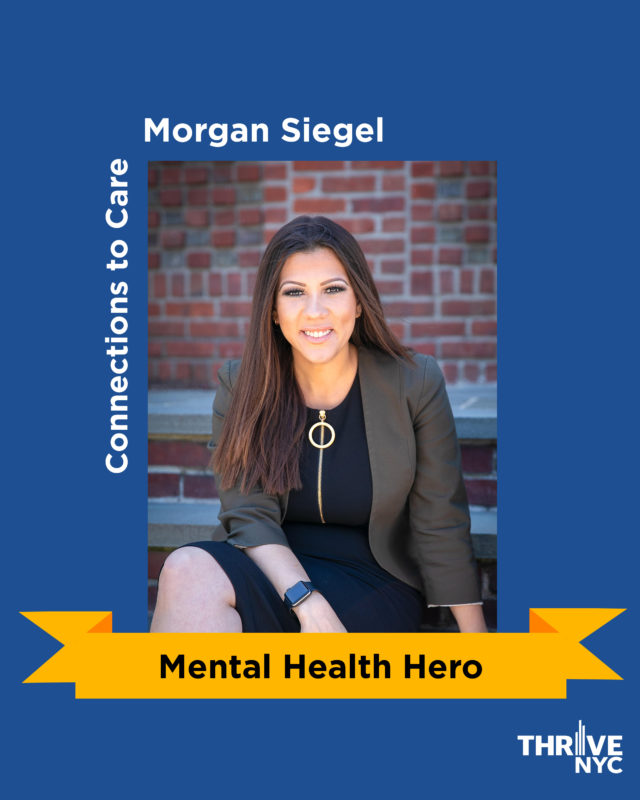Connections to Care – Mental Health Integration in Community-Based Organizations: Support in their darkest moments
 As a bilingual therapist at the community nonprofit NMIC, Morgan Siegel has seen firsthand that communities of color, including the Latinx communities in upper Manhattan and the Bronx, are bearing a particularly heavy mental health burden during the COVID-19 pandemic. She has spent the last several months directly addressing this profound need.
As a bilingual therapist at the community nonprofit NMIC, Morgan Siegel has seen firsthand that communities of color, including the Latinx communities in upper Manhattan and the Bronx, are bearing a particularly heavy mental health burden during the COVID-19 pandemic. She has spent the last several months directly addressing this profound need.
Ms. Siegel manages NMIC’s Connections to Care program, an Office of Community Mental Health initiative that helps non-profit organizations embed mental health support into the services they offer their communities. Under Ms. Siegel’s leadership, the program provides bilingual counseling and referrals, and also trains NMIC staff to screen clients for mental health needs and connect them to clinical services.
As COVID-19 cases spiked through the City, Ms. Siegel moved her team’s services from in-person to virtual in order to keep her clients safe. This was no small feat: some clients needed extra support adapting to tele-mental health technology, and many had trouble finding time and space to speak privately in multi-family households. Despite the challenges, the transition to tele-mental health has been remarkably successful: 93% of clients referred to mental health services by NMIC have kept their appointments during the pandemic.
Ms. Siegel knew that it wasn’t just clients who needed mental health support, her colleagues did as well. She developed virtual groups for NMIC staff who were feeling COVID-related stress and anxiety, so they could connect while remaining physically apart. “It’s been wildly popular with staff,” said Rodrigo Sanchez-Camus, Director of Legal, Organizing, & Advocacy Services. “Staff felt a lot of pressure and needed an outlet.”
Her work didn’t end there. During the summer, when the death of George Floyd sparked protests around the City, Ms. Siegel wanted other NMIC staff members to consider the ways in which issues of systemic inequity and racist violence could be viewed through the lens of mental health. She launched a series of internal staff conversations to help NMIC explore how to best serve their clients through a race-informed therapeutic approach.
“Morgan’s internal focus on mental health work has been transformational in that she’s led robust conversations about how we approach our clients and communicate with them,” added Rodrigo Sanchez-Camus. “We wouldn’t have been able to do that without Connections to Care and without Morgan. Our agency is blessed to have her.”
From Ms. Siegel:
“I knew my entire life that I would be in a helping profession. I love to walk alongside clients in their journey through their darkest moments and happiest successes. During this time, when mental health is now more important than ever, I have felt the power of a program to provide supportive and responsive services to our community.”
Community mental health program: Connections to Care: Mental Health Integration in Community-Based Organizations
The Office of Community Mental Health partners with the Mayor’s Office for Economic Opportunity to integrate mental health support into the work of community-based organizations (CBOs) serving at-risk and low-income communities across the City. Through Connections to Care, CBO partners work with mental health providers who train and coach staff to screen their clients for mental health needs, offer direct support when appropriate, and link to local health providers for further care if needed. The program is operated in partnership with the Department of Health and Mental Hygiene, with additional funding through the Mayor’s Fund to Advance New York City and other private funders. Nearly 2,000 community-based staff have been trained through the program, and more than 46,000 New Yorkers have received screening or other services. More than 80 percent of clients referred to mental health services at the height of the pandemic (April through June 2020) kept their appointment. Learn more about the program and its impact here.